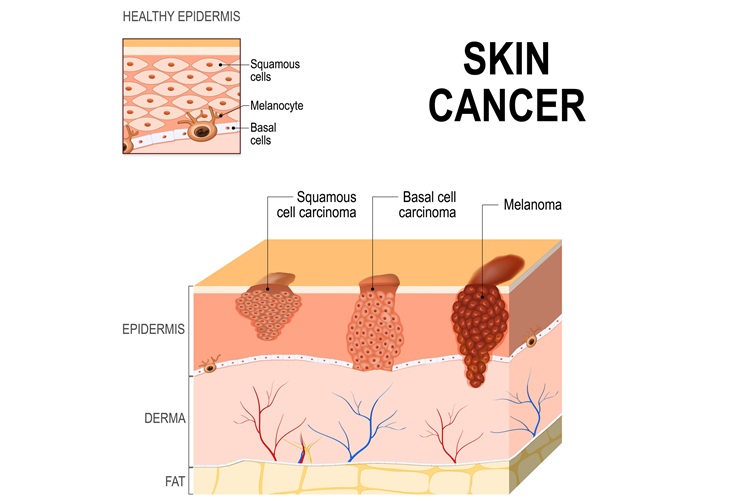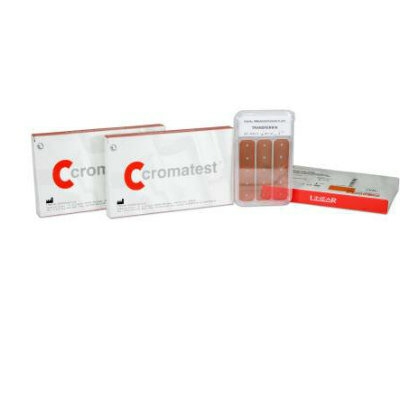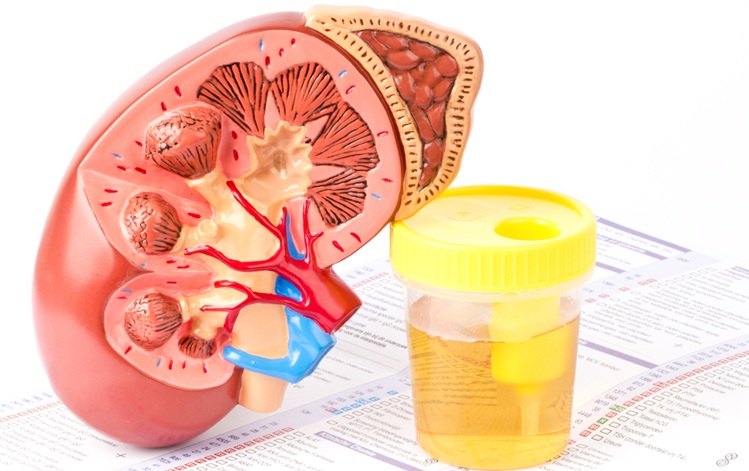Environmental Allergens Trigger Type 2 Inflammation Through Ripoptosome Activation
|
By LabMedica International staff writers Posted on 27 Sep 2021 |

Image: BD LSRFortessa is a high-end cell analyzer. It is equipped with four lasers allowing for up to 16 colors (18 parameters) analysis (Photo courtesy of ETH Zurich)
Environmental allergens, including fungi, insects and mites, trigger type 2 immunity; however, the innate sensing mechanisms and initial signaling events remain unclear. The allergens trigger activity among an interlocked set of cell death-inducing signals called the ripoptosome.
Although myeloid cells prime adaptive immunity in generating IgE3 and type 2 T helper cell (Th2) responses, allergens are initially recognized by the innate immune system, triggering downstream responses leading to production of type 2 effectors, before the initiation of adaptive immunity.
Immunologists and their colleagues at the Cincinnati Children’s Hospital Medical Center (Cincinnati, OH, USA) recently reported that allergens trigger RIPK1–caspase 8 ripoptosome activation in epithelial cells. The active caspase 8 subsequently engages caspases 3 and 7, which directly mediate intracellular maturation and release of interleukin-33 (IL-33), a pro-atopy, innate immunity, alarmin cytokine. The team used different cell line and murine models. Data were acquired on a BD LSRFortessa flow cytometer (BD Biosciences, San Jose, CA, USA). In IL-33 secretion assays, the concentration of released IL-33 in cell culture supernatants was determined by ELISA (R&D Systems, Minneapolis, MN, USA).
The team reported that mature IL-33 maintained functional interaction with the cognate ST2 receptor and elicited potent pro-atopy inflammatory activity in vitro and in vivo. Inhibiting caspase 8 pharmacologically and deleting murine Il33 and Casp8 each attenuated allergic inflammation in vivo. Clinical data substantiated ripoptosome activation and IL-33 maturation as likely contributors to human allergic inflammation. They found that in the human allergic disease eosinophilic esophagitis ripoptosome activation markers and mature IL-33 levels dynamically correlated with the degree of esophageal eosinophilia and disease activity.
Marc Rothenberg, MD, PhD, Director of the Division of Allergy and Immunology at Cincinnati Children’s and senior author on the study, said, “Disrupting this allergen sensing pathway could provide a unique opportunity to counteract type 2 immunity and alleviate allergic inflammation.”
The authors concluded that their findings reveal an epithelial barrier, allergen-sensing mechanism that converges on the ripoptosome as an intracellular molecular signaling platform, triggering type 2 innate immune responses. These findings have significant implications for understanding and treating human allergic diseases. The study was published on September 16, 2021 in the journal Nature Immunology.
Related Links:
Cincinnati Children’s Hospital Medical Center
BD Biosciences
R&D Systems
Although myeloid cells prime adaptive immunity in generating IgE3 and type 2 T helper cell (Th2) responses, allergens are initially recognized by the innate immune system, triggering downstream responses leading to production of type 2 effectors, before the initiation of adaptive immunity.
Immunologists and their colleagues at the Cincinnati Children’s Hospital Medical Center (Cincinnati, OH, USA) recently reported that allergens trigger RIPK1–caspase 8 ripoptosome activation in epithelial cells. The active caspase 8 subsequently engages caspases 3 and 7, which directly mediate intracellular maturation and release of interleukin-33 (IL-33), a pro-atopy, innate immunity, alarmin cytokine. The team used different cell line and murine models. Data were acquired on a BD LSRFortessa flow cytometer (BD Biosciences, San Jose, CA, USA). In IL-33 secretion assays, the concentration of released IL-33 in cell culture supernatants was determined by ELISA (R&D Systems, Minneapolis, MN, USA).
The team reported that mature IL-33 maintained functional interaction with the cognate ST2 receptor and elicited potent pro-atopy inflammatory activity in vitro and in vivo. Inhibiting caspase 8 pharmacologically and deleting murine Il33 and Casp8 each attenuated allergic inflammation in vivo. Clinical data substantiated ripoptosome activation and IL-33 maturation as likely contributors to human allergic inflammation. They found that in the human allergic disease eosinophilic esophagitis ripoptosome activation markers and mature IL-33 levels dynamically correlated with the degree of esophageal eosinophilia and disease activity.
Marc Rothenberg, MD, PhD, Director of the Division of Allergy and Immunology at Cincinnati Children’s and senior author on the study, said, “Disrupting this allergen sensing pathway could provide a unique opportunity to counteract type 2 immunity and alleviate allergic inflammation.”
The authors concluded that their findings reveal an epithelial barrier, allergen-sensing mechanism that converges on the ripoptosome as an intracellular molecular signaling platform, triggering type 2 innate immune responses. These findings have significant implications for understanding and treating human allergic diseases. The study was published on September 16, 2021 in the journal Nature Immunology.
Related Links:
Cincinnati Children’s Hospital Medical Center
BD Biosciences
R&D Systems
Latest Immunology News
- Blood-Based Liquid Biopsy Model Analyzes Immunotherapy Effectiveness
- Signature Genes Predict T-Cell Expansion in Cancer Immunotherapy
- Molecular Microscope Diagnostic System Assesses Lung Transplant Rejection
- Blood Test Tracks Treatment Resistance in High-Grade Serous Ovarian Cancer
- Luminescent Probe Measures Immune Cell Activity in Real Time
- Blood-Based Immune Cell Signatures Could Guide Treatment Decisions for Critically Ill Patients
- Novel Tool Predicts Most Effective Multiple Sclerosis Medication for Patients
- Companion Diagnostic Test for CRC Patients Identifies Eligible Treatment Population
- Novel Tool Uses Deep Learning for Precision Cancer Therapy
- Companion Diagnostic Test Identifies HER2-Ultralow Breast Cancer and Biliary Tract Cancer Patients
- Novel Multiplex Assay Supports Diagnosis of Autoimmune Vasculitis
- Blood Test Predicts Immunotherapy Efficacy in Triple-Negative Breast Cancer
- Simple Genetic Testing Could Predict Treatment Success in Multiple Sclerosis Patients
- Novel Gene Signature Predicts Immunotherapy Response in Advanced Kidney Cancers
- New Technology Deciphers Immune Cell Communication to Predict Immunotherapy Response
- AI Model Accurately Predicts MSI Tumor and Immune Checkpoint Inhibitor Responsiveness
Channels
Clinical Chemistry
view channel
VOCs Show Promise for Early Multi-Cancer Detection
Early cancer detection is critical to improving survival rates, but most current screening methods focus on individual cancer types and often involve invasive procedures. This makes it difficult to identify... Read more
Portable Raman Spectroscopy Offers Cost-Effective Kidney Disease Diagnosis at POC
Kidney disease is typically diagnosed through blood or urine tests, often when patients present with symptoms such as blood in urine, shortness of breath, or weight loss. While these tests are common,... Read moreMolecular Diagnostics
view channel
Urine Test Detects Early Stage Pancreatic Cancer
Pancreatic cancer remains among the hardest cancers to detect early. In the UK, around 10,000 people are diagnosed each year, but only 5% survive beyond five years. Late diagnosis is a major factor—more... Read more
Genomic Test Could Reduce Lymph Node Biopsy Surgery in Melanoma Patients
Accurately determining whether melanoma has spread to the lymph nodes is crucial for guiding treatment decisions, yet the standard procedure—sentinel lymph node biopsy—remains invasive, costly, and unnecessary... Read moreHematology
view channel
ADLM’s New Coagulation Testing Guidance to Improve Care for Patients on Blood Thinners
Direct oral anticoagulants (DOACs) are one of the most common types of blood thinners. Patients take them to prevent a host of complications that could arise from blood clotting, including stroke, deep... Read more
Viscoelastic Testing Could Improve Treatment of Maternal Hemorrhage
Postpartum hemorrhage, severe bleeding after childbirth, remains one of the leading causes of maternal mortality worldwide, yet many of these deaths are preventable. Standard care can be hindered by delays... Read more
Pioneering Model Measures Radiation Exposure in Blood for Precise Cancer Treatments
Scientists have long focused on protecting organs near tumors during radiotherapy, but blood — a vital, circulating tissue — has largely been excluded from dose calculations. Each blood cell passing through... Read moreMicrobiology
view channel
High-Throughput Enteric Panels Detect Multiple GI Bacterial Infections from Single Stool Swab Sample
Gastrointestinal (GI) infections are among the most common causes of illness worldwide, leading to over 1.7 million deaths annually and placing a heavy burden on healthcare systems. Conventional diagnostic... Read more
Fast Noninvasive Bedside Test Uses Sugar Fingerprint to Detect Fungal Infections
Candida bloodstream infections are a growing global health threat, causing an estimated 6 million cases and 3.8 million deaths annually. Hospitals are particularly vulnerable, as weakened patients after... Read morePathology
view channel
New Molecular Analysis Tool to Improve Disease Diagnosis
Accurately distinguishing between similar biomolecules such as proteins is vital for biomedical research and diagnostics, yet existing analytical tools often fail to detect subtle structural or compositional... Read more
Tears Offer Noninvasive Alternative for Diagnosing Neurodegenerative Diseases
Diagnosing and monitoring eye and neurodegenerative diseases often requires invasive procedures to access ocular fluids. Ocular fluids like aqueous humor and vitreous humor contain valuable molecular information... Read moreTechnology
view channel
Cell-Sorting Device Uses Electromagnetic Levitation to Precisely Direct Cell Movement
Sorting different cell types—such as cancerous versus healthy or live versus dead cells—is a critical task in biology and medicine. However, conventional methods often require labeling, chemical exposure,... Read more
Embedded GPU Platform Enables Rapid Blood Profiling for POC Diagnostics
Blood tests remain a cornerstone of medical diagnostics, but traditional imaging and analysis methods can be slow, costly, and reliant on dyes or contrast agents. Now, scientists have developed a real-time,... Read moreIndustry
view channel
Qiagen Acquires Single-Cell Omics Firm Parse Biosciences
QIAGEN (Venlo, Netherlands) has entered into a definitive agreement to fully acquire Parse Biosciences (Seattle, WA, USA), a provider of scalable, instrument-free solutions for single-cell research.... Read more
Puritan Medical Products Showcasing Innovation at AMP2025 in Boston
Puritan Medical Products (Guilford, ME, USA), the world’s most trusted manufacturer of swabs and specimen collection devices, is set to exhibit at AMP2025 in Boston, Massachusetts, from November 11–15.... Read more
Advanced Instruments Merged Under Nova Biomedical Name
Advanced Instruments (Norwood, MA, USA) and Nova Biomedical (Waltham, MA, USA) are now officially doing business under a single, unified brand. This transformation is expected to deliver greater value... Read more





















